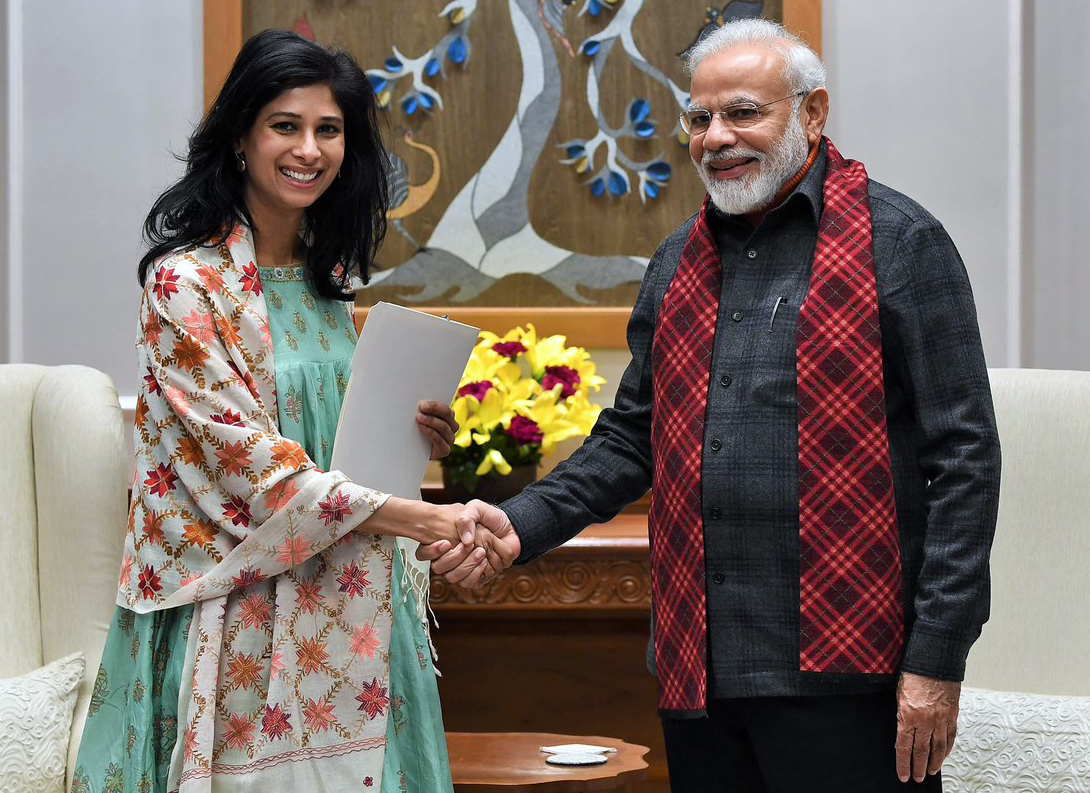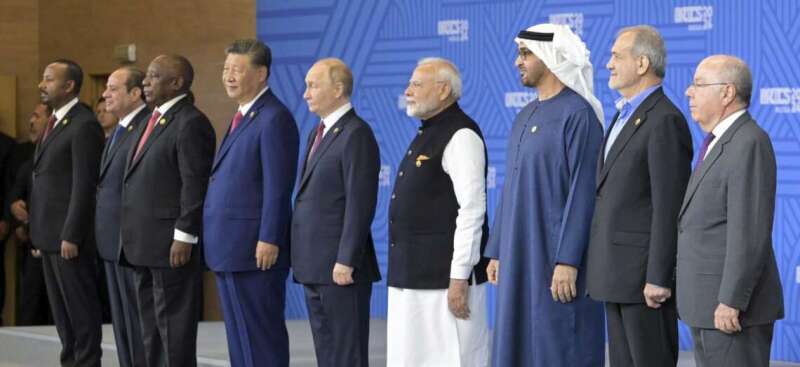The forecast for growth in emerging market and developing economies has been revised upward and the projected increase is powered by China and India…reports Asian Lite News
The International Monetary Fund (IMF), in its latest outlook, has raised India’s growth projections for 2024 from 6.8 per cent earlier to 7 per cent, with the country maintaining the fastest-growing status in emerging markets and developing economies.
The IMF had earlier projected growth rate of 6.5 per cent for 2024, revising it to 6.8 per cent and now 7 per cent. India continues to be the fastest growing major economy.
For the year 2025, the IMF projected India’s growth rate at 6.5 per cent. It attributed robustness and strength in domestic demand and a rising working-age population behind its growth projections.
“Growth in India and China will account for almost half of global growth in 2024,” Gita Gopinath, First Deputy Managing Director of IMF and former Chief Economist at the IMF, said in a X post.
The forecast for growth in emerging market and developing economies has been revised upward and the projected increase is powered by stronger activity in Asia, particularly China and India. For China, the growth forecast has been revised upward to 5 percent in 2024, primarily on account of a rebound in private consumption and strong exports in the first quarter, IMF said.
“The forecast for growth in India has also been revised upward, to 7.0 percent, this year, with the change reflecting carryover from upward revisions to growth in 2023 and improved prospects for private consumption, particularly in rural areas,” IMF said.
According to official data of the Indian government, the country’s GDP grew at an impressive 8.2 per cent during the financial year 2023-24, and it continued to remain the fastest-growing major economy. India’s economy grew 7.2 per cent in 2022-23 and 8.7 per cent in 2021-22 respectively.
The Reserve Bank of India, in its latest monetary policy meeting, raised the GDP forecast for the current for 2024-25 to 7.2 per cent from 7 per cent earlier.
The World Bank too upwardly revised India’s GDP growth forecast for the current financial year 2024-25 by 20 basis points to 6.6 per cent from its earlier projection of 6.4 per cent made in January. World Bank said India will remain the fastest-growing of the world’s largest economies, although its pace of expansion is expected to moderate.
Morgan Stanley has forecast 6.8 per cent growth in India in 2024.
The United Nations recently raised India’s economic growth projections for 2024 from 6.2 per cent to 6.9 per cent, mainly driven by strong public investment and resilient private consumption.
Moody’s Ratings expects India to grow at 6.6 per cent in 2024-25.
Organisation for Economic Co-operation and Development (OECD) projects India to grow 6.6 per cent in the next two years.
The Asian Development Bank (ADB) had upgraded India’s gross domestic product (GDP) growth forecast for financial year 2024 from 6.7 per cent to 7 per. (ANI)
RBI Governor Shaktikanta Das last month said India was at the threshold of a “major structural shift” in its growth trajectory. He said the country was moving towards a path where 8 per cent GDP growth could be sustained on a yearly basis for a longer term.
The IMF report has upgraded the growth forecast for China for calendar year 2024 by 40 basis points to 5 per cent on account of a rebound in private consumption and strong exports in the first quarter. On a calendar-year basis, India’s growth projections are 7.3 per cent in 2024 and 6.5 per cent in 2025, according to the IMF.
IMF Chief Economist Pierre-Olivier Gourinchas said Asia’s emerging market economies remained the main engine for the global economy.
“Growth in India and China is revised upwards and accounts for almost half of global growth. Yet prospects for the next five years remain weak, largely because of waning momentum in emerging Asia,” Gourinchas said in a blog post.
The IMF’s global growth projections are unchanged at 3.2 per cent for calendar year 2024 and slightly higher at 3.3 per cent in 2025.
The multilateral organisation has predicted the global inflation rate to slow to 5.9 per cent in 2024 from 6.7 per cent last year, broadly on track for a soft landing.
“The good news is that, as headline shocks receded, inflation came down without a recession. The bad news is that energy and food price inflation are now almost back to prepandemic levels in many countries, while overall inflation is not,” Gourinchas added.
ALSO READ-G20 Presidency Drives Global Digital Public Infrastructure Agenda













